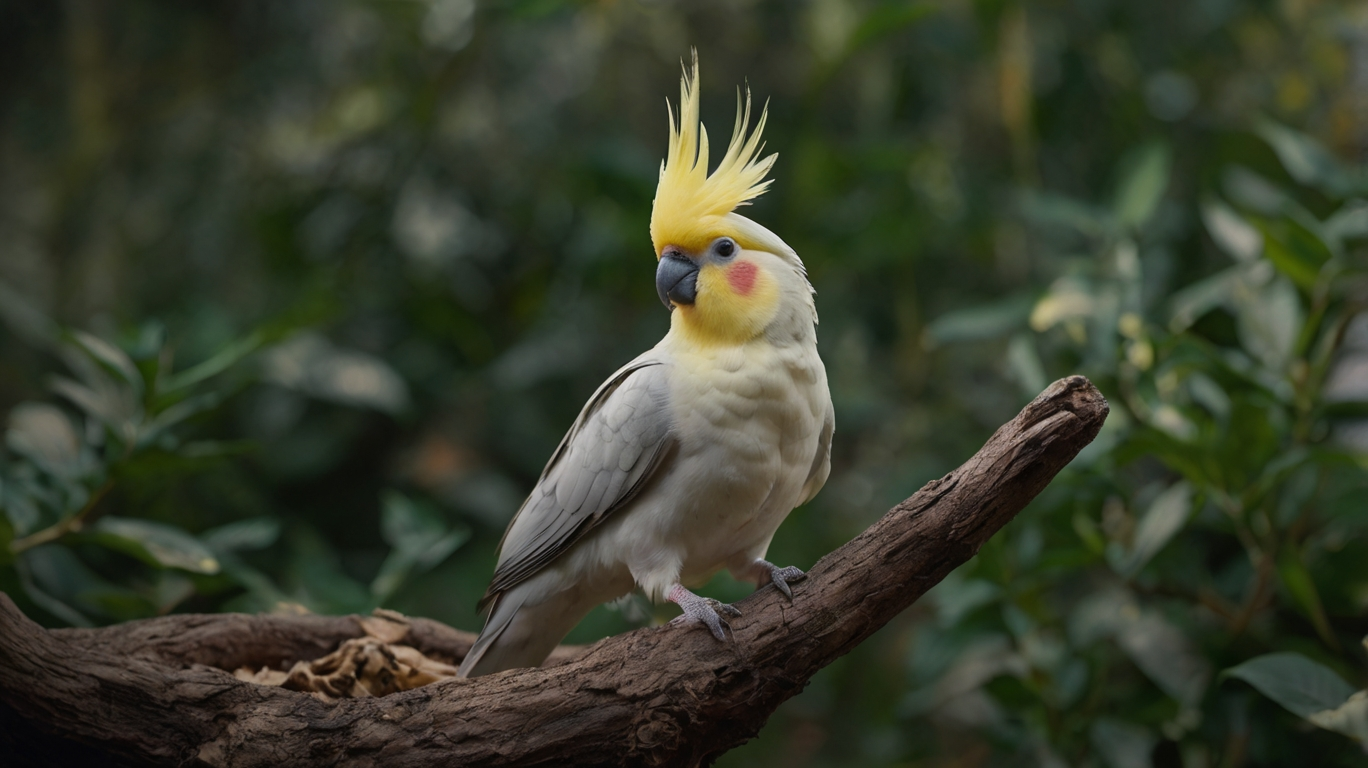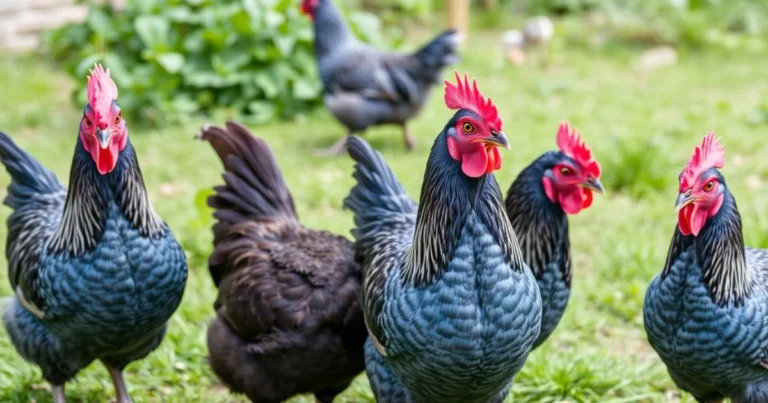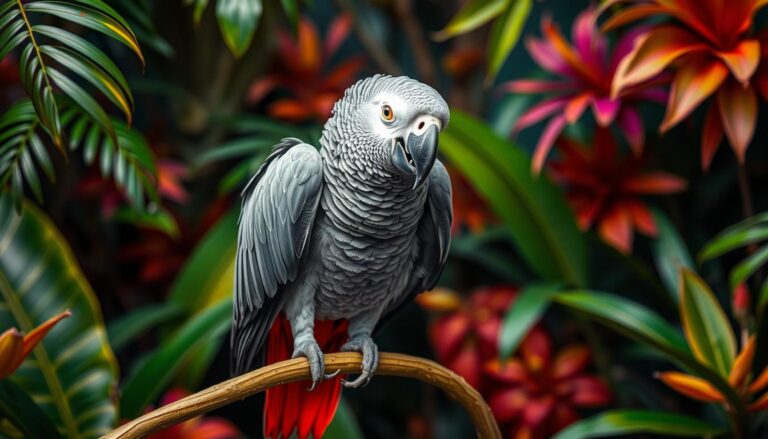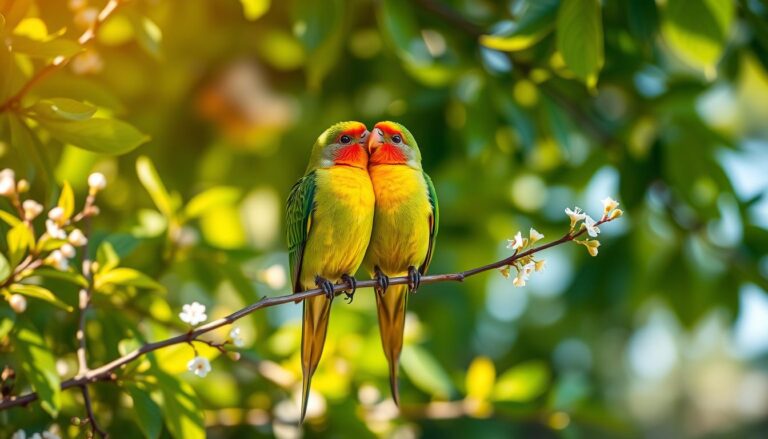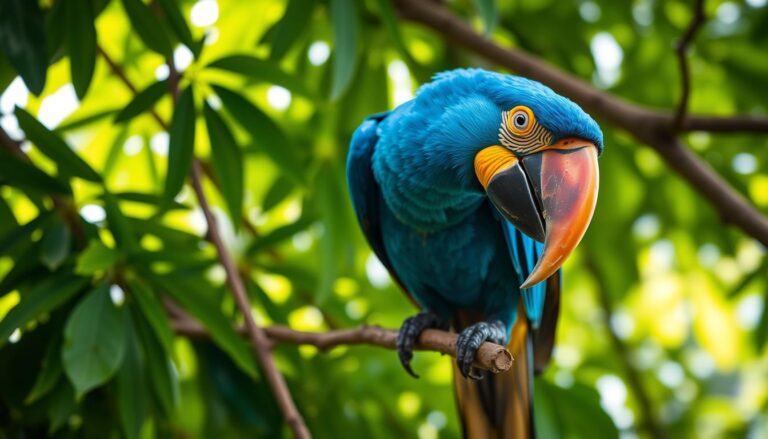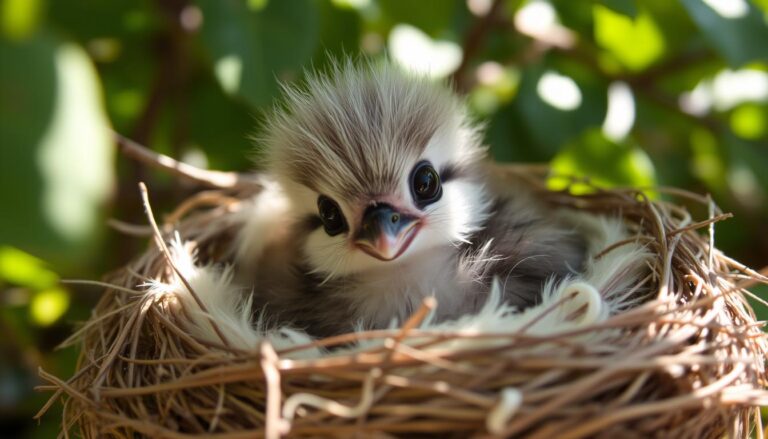Ashenfallow Cockatiel: 7 Astonishing Secrets for a Happier Bird
Introduction
Imagine a bird with a subtle, smoky hue, perched on your finger and gently tilting its head with friendly curiosity. That’s the charm of the ashenfallow cockatiel, a distinct variation of the ever-popular cockatiel species beloved for its calm demeanor and playful whistle. Whether you’re an experienced bird enthusiast or a beginner hoping to expand your avian family, learning about the ashenfallow cockatiel can open a whole new world of feathered enjoyment.
In this guide, you’ll discover comprehensive insights into the history, genetics, care requirements, and unique behavioral traits of the ashenfallow cockatiel. By the end, you’ll have a clear roadmap on how to provide the very best environment for your ashenfallow cockatiel—everything from cage setup and nutrition to bonding strategies and potential health concerns. Let’s dive into the enchanting realm of the ashenfallow cockatiel together.
The Fascinating History and Origin of the Ashenfallow Cockatiel
How the Cockatiel Got Its Start
Cockatiels (Nymphicus hollandicus) naturally hail from the arid and semi-arid regions of Australia. Over time, aviculturists worldwide have selectively bred these sociable birds for a variety of color mutations. Among these, the ashenfallow cockatiel stands out for its gentle, washed-out coloration that appears almost dreamlike.
Since their introduction to bird enthusiasts, cockatiels have skyrocketed in popularity due to their social nature, moderate size, and ease of care. The American Federation of Aviculture notes that cockatiels are among the top choices for first-time bird owners . Yet, while many people are familiar with popular mutations like the lutino or pied, the ashenfallow cockatiel is a rarer gem that sparks immediate intrigue.
What Makes the Ashenfallow Cockatiel So Special?
The ashenfallow cockatiel is defined by a particular genetic mutation that influences feather pigmentation. Specifically, it reduces the intensity of the usual gray or brown melanin, creating a soft, smoky effect. The lighter body color is often contrasted by subtle yellow or white highlights around the face, crest, and wingtips, though each ashenfallow cockatiel can present a slightly different hue pattern.
- Subtle Beauty: Their coloring is understated, with gentle transitions between grayish-brown and pastel highlights.
- Rarity: Because breeding for the ashenfallow cockatiel mutation requires specific genetic pairings, they’re less commonly found than standard grays or lutinos.
- Gentle Demeanor: Many owners report that the ashenfallow cockatiel’s calm coloration seems to mirror a laid-back, sweet personality—though every individual bird is unique.
Recognizing an Ashenfallow Cockatiel: A Quick Overview
To help you identify the distinct features of the ashenfallow cockatiel, take a look at this simple table comparing it to some other popular cockatiel color mutations:
| Color Mutation | Primary Features | Common Personality Traits |
|---|---|---|
| Ashenfallow Cockatiel (Focus) | Light, smoky grayish-brown plumage with softly faded melanin; subtle face highlights | Generally calm, friendly, good at bonding with owners |
| Lutino Cockatiel | Predominantly yellow or white feathers, bright orange cheek patches | Outgoing, often vocal, thrives on attention |
| Pied Cockatiel | Random patches of yellow or white mixed with gray | Curious, playful, can be slightly mischievous |
| Pearl Cockatiel | Mottled “pearl” patterns on wings and back | Curious, affectionate, sometimes shy at first |
| Classic Gray Cockatiel | Standard gray with yellow face (males) or gray face (females), orange cheek spots | Easygoing, good for beginners, widely popular |
While all cockatiels share certain traits—like their iconic crest and orange cheeks—the ashenfallow cockatiel is set apart by its overall muted palette. If you spot a bird with subtle, pastel-like shading that seems to glow under certain lighting, you’re likely gazing at an ashenfallow cockatiel.
Genetics and Inheritance
How the Ashenfallow Trait Passes On
When it comes to creating an ashenfallow cockatiel, genetics are everything. This mutation often involves recessive traits that require both parents to carry or express the ashenfallow gene. Breeders who specialize in color mutations keep meticulous records of parental lineages, ensuring the best chances of producing healthy ashenfallow chicks.
- Recessive Mutation: If a trait is recessive, a bird must inherit two copies of the gene (one from each parent) for it to manifest in the chick’s plumage.
- Breeding Strategies: Breeders may pair visual ashenfallow cockatiels with “split” birds that carry the gene but don’t visually show it.
- Small Genetic Pool: As ashenfallow is relatively rare, breeders often work within limited lines, making responsible breeding crucial to maintaining robust genetic diversity.
Ethical Considerations
Any time you’re dealing with rare color mutations like the ashenfallow cockatiel, ethical breeding practices are paramount. Over-breeding or inbreeding can lead to health complications, including reduced immune function and developmental issues. Always ensure you purchase or adopt from reputable sources that prioritize the well-being of each ashenfallow cockatiel.
Setting Up the Perfect Home for Your Ashenfallow Cockatiel
Cage Dimensions and Layout
Whether you’re housing an ashenfallow cockatiel or any other cockatiel variety, space is a key factor in promoting physical and mental well-being. A single ashenfallow cockatiel does well in a cage that’s at least 24 inches wide, 24 inches tall, and 24 inches deep. For pairs, go larger—think 30 inches or more in each dimension—to accommodate flight space and prevent territorial disputes.
- Horizontal Bars: Cockatiels love to climb, so cages with horizontal bars are beneficial.
- Bar Spacing: Aim for 0.5–0.75 inches to keep your ashenfallow cockatiel safe.
- Perches: Provide multiple perches of varying diameters and textures, such as natural wood branches.
Choosing the Ideal Spot in Your Home
Your ashenfallow cockatiel thrives in an area with good airflow, moderate humidity, and minimal drafts. Keep the cage away from kitchens (to avoid fumes) and outside of direct sunlight from windows (which can overheat the bird). A cozy corner in a living or family room often works best, allowing your ashenfallow cockatiel to enjoy daily interactions without feeling isolated.
Furnishing the Cage
To keep your ashenfallow cockatiel entertained and content:
- Toys: Swap out a variety of chewable toys, bells, and foraging puzzles every week or two.
- Food and Water Dishes: Position them away from perches to prevent droppings from contaminating water or food.
- Nest Box (If Breeding): If you plan to breed ashenfallow cockatiels in the future, you’ll need a suitable nesting box, but only place it when you’re ready for potential eggs.
Nutrition: Feeding Your Ashenfallow Cockatiel for Optimal Health
The Foundation: High-Quality Pellets
Most avian veterinarians recommend a pellet-based diet for cockatiels because pellets offer balanced nutrients, including essential vitamins and minerals. Your ashenfallow cockatiel, like all cockatiels, thrives on a reliable base of specially formulated pellets. Look for brands that avoid artificial dyes and emphasize natural ingredients.
Seeds and Fresh Produce
While seeds used to be the go-to diet for cockatiels, modern bird nutrition leans toward pellets supplemented with seeds in moderation. Too many seeds can lead to obesity and nutritional deficiencies. Meanwhile, fresh fruits and vegetables—carrots, spinach, bell peppers, apples, berries—provide variety and essential phytonutrients.
- Seed Mix: Offer seeds as occasional treats or training rewards.
- Fresh Greens: Rotate kale, spinach, dandelion greens, and other leafy vegetables.
- Fruit Treats: Berries, chopped apples, or small pieces of melon.
- Clean Water: Refresh daily to maintain your ashenfallow cockatiel’s hydration and health.
Supplements and Special Considerations
A cuttlebone or mineral block helps maintain strong bones and a healthy beak. However, avoid over-supplementation with vitamins or minerals unless directed by a vet. Every ashenfallow cockatiel has unique dietary nuances, so consult with an avian veterinarian for personalized advice.
Daily Interactions and Bonding
Building Trust Through Positive Reinforcement
Your ashenfallow cockatiel is more than just a pretty face—these birds are intelligent, social creatures that crave interaction. By consistently using positive reinforcement, you’ll help your ashenfallow cockatiel grow comfortable and confident around you. Offer small treats or gentle praise when it steps up onto your hand, attempts a new trick, or even just interacts calmly.
- Start Small: Begin with short sessions of about 10 minutes.
- Use Treats Wisely: A favorite seed can do wonders for rewarding good behavior.
- Watch for Body Language: If your ashenfallow cockatiel fluffs its feathers or backs away, give it some space.
Playtime Outside the Cage
Letting your ashenfallow cockatiel out of the cage regularly allows it to stretch its wings, exercise, and satisfy its curiosity. Set up a bird-proofed play area free from hazardous items like open windows or toxic plants. Engage in gentle games like “peek-a-boo” or teach your ashenfallow cockatiel to navigate a small obstacle course of perches and ladders.
Understanding Ashenfallow Cockatiel Behavior
Natural Temperament
In general, the ashenfallow cockatiel showcases a calm demeanor. Many owners describe their ashenfallow cockatiel as a gentle observer, preferring occasional lively whistles over loud shrieking. That said, each bird’s personality can differ—some may be shyer, while others might relish being the center of attention.
Vocalizations
Cockatiels communicate through chirps, whistles, and occasional mimicry. Males are typically more vocal, using whistling “serenades” to attract mates or to interact with human companions. If your ashenfallow cockatiel starts mimicking your microwave beeps or favorite tunes, don’t be surprised—they are natural imitators when they feel secure.
Social Needs
Cockatiels are flock birds, thriving on companionship. If you’re often away, consider getting another ashenfallow cockatiel or a different cockatiel mutation—like a lutino cockatiel—to keep your bird company, provided you have enough space. Before adding a new bird, ensure proper quarantine and gradual introductions to prevent stress or illness.
Note: Interested in learning about color variations beyond ashenfallow cockatiel? Check out how lutino cockatiel coloration might compare.
Grooming and Hygiene
Baths and Misting
Your ashenfallow cockatiel will need regular baths or gentle misting to keep its feathers in top shape. Some birds enjoy splashing in a shallow dish, while others prefer a fine mist from a spray bottle. This helps remove dander, reduces itchiness, and promotes overall feather health.
Nail and Beak Care
In a normal environment with enough perches and chew toys, your ashenfallow cockatiel should maintain an appropriately worn beak and nails. However, if the nails grow too long or the beak appears overgrown, consult an avian vet. Attempting to trim these on your own, especially without guidance, can lead to injury or infection.
Cage Maintenance
A clean cage is essential for your ashenfallow cockatiel’s health. Replace cage liners every day or two, wash food and water dishes daily, and perform a thorough cage cleaning once a week. Maintaining hygiene minimizes the risk of bacterial growth and keeps your ashenfallow cockatiel comfortable.
Health and Veterinary Care
Common Health Concerns
While the ashenfallow cockatiel isn’t inherently more prone to illnesses than other mutations, all cockatiels can face issues like respiratory infections, psittacosis, and nutritional deficiencies if not cared for properly. Watch for signs such as:
- Lethargy or fluffed-up feathers
- Loss of appetite
- Nasal discharge or sneezing
- Changes in droppings
If you observe any of these symptoms, consult an avian veterinarian right away. Early intervention often makes the difference between a quick recovery and a serious complication.
Annual Check-Ups
Routine veterinary visits can spot potential problems before they escalate. An avian vet may run blood tests, fecal exams, or X-rays if necessary. You’ll also get personalized recommendations on diet, grooming, and environment—vital knowledge to keep your ashenfallow cockatiel thriving.
For more detailed insights on advanced health topics, consider reading specialized articles like [INTERNAL LINK 4], which delve into disease prevention and the latest avian healthcare research.
Trustworthy External Resource
Stay updated on best practices by referencing authoritative resources like the American Veterinary Medical Association’s Bird Care Guidelines. This site offers science-backed advice on nutrition, habitat, and disease prevention to ensure your ashenfallow cockatiel remains in prime condition.
Breeding the Ashenfallow Cockatiel
Breeding Readiness
If you plan to breed an ashenfallow cockatiel, ensure you fully understand the genetic complexities. You’ll need a mature, compatible pair—usually at least 18–24 months old—and a quiet, stress-free environment. Provide a spacious breeding cage, nesting box, and a nutritious diet rich in calcium and protein.
Incubation and Chick Rearing
Cockatiels generally lay 4–6 eggs per clutch, with each egg laid about 48 hours apart. Incubation takes roughly 18–21 days. While some breeders choose to hand-feed chicks to ensure tameness, parent-rearing often results in well-socialized babies who learn essential bird behaviors directly from adults.
Ethical Considerations
Breeding an ashenfallow cockatiel is exciting, but it also carries a responsibility to maintain ethical standards. Avoid overbreeding or breeding birds with known genetic issues. Always place the health and happiness of the parent birds above the desire to produce more ashenfallow cockatiels.
Real-Life Example: My Journey with an Ashenfallow Cockatiel Named Luna
Several years ago, I adopted a timid ashenfallow cockatiel named Luna, whose faint grayish-brown plumage shimmered in the sunlight. The first few weeks were a challenge—Luna was easily startled and preferred observing from a distance. By incorporating gentle daily training sessions with millet treats, I gradually earned her trust. Over time, Luna’s calm but curious nature emerged: she’d hop onto my shoulder, nibble on my earlobe (softly!), and even learned to whistle a three-note tune that somehow reminded me of an old lullaby.
Caring for Luna taught me the nuances of ashenfallow cockatiel ownership—from the importance of consistent positive reinforcement to the sheer delight of watching a reserved bird grow into a warm, engaging companion. Witnessing her transformation reaffirmed that an ashenfallow cockatiel may begin as a shy, pastel-hued wallflower, but with patience, love, and proper care, they can blossom into an incredibly devoted friend.
Common Challenges and Solutions
Excessive Screaming or Chirping
Although the ashenfallow cockatiel is typically quieter than some other parrots, any cockatiel might scream if bored or seeking attention. Solve this by:
- Providing mental stimulation (foraging toys, interactive play)
- Ensuring sufficient out-of-cage time
- Rewarding quiet behavior rather than reacting to loud screeches
Feather Plucking
Feather plucking is a stress-related or medical issue that can afflict any cockatiel, including the ashenfallow cockatiel. If you notice bald spots or obsessive preening, consult a vet to rule out parasites or underlying illnesses. Increase environmental enrichment and reduce possible stressors like loud noise, sudden schedule changes, or overcrowded cages.
Bonding with Timid Birds
Some ashenfallow cockatiels are more reserved, especially if they weren’t socialized well as chicks. Patience is key. Use gradual exposure to new experiences, gentle praise, and consistent training routines to build confidence. Over time, a timid ashenfallow cockatiel can develop a trusting, close bond with you.
FAQs
What is the typical lifespan of an ashenfallow cockatiel?
An ashenfallow cockatiel often lives 15 to 25 years with proper care. Consistent nutrition, vet checkups, and mental enrichment boost longevity. A well-tended ashenfallow cockatiel can stay active and affectionate for decades.
Do ashenfallow cockatiels require special diets?
An ashenfallow cockatiel needs a balanced pellet base plus fresh veggies and some seeds. While no extreme diet changes are mandatory, quality nutrition is essential. A healthy diet keeps your ashenfallow cockatiel vibrant and happy.
Should first-time owners consider an ashenfallow cockatiel?
Yes, an ashenfallow cockatiel can be suitable for first-time owners. They’re generally gentle and adapt well to consistent care. With patience, your ashenfallow cockatiel bonds closely and thrives in a loving home.
How do I calm a stressed ashenfallow cockatiel?
Offer a quiet, secure environment and plenty of gentle interaction. Avoid sudden moves or loud noises around your ashenfallow cockatiel. Gradual bonding and positive reinforcement help reduce stress.
Can an ashenfallow cockatiel talk or mimic sounds?
An ashenfallow cockatiel may learn simple words or whistles. Cockatiels aren’t the best talkers, but some mimic phrases or household sounds. With patience, your ashenfallow cockatiel might surprise you by imitating tunes.
How can I find a reputable breeder for ashenfallow cockatiels?
Check avian groups, trusted breeders, or recommendations from avian vets. Reputable breeders prioritize health and proper care for each ashenfallow cockatiel. Always ask about lineage, health records, and socialization practices.
Conclusion
The ashenfallow cockatiel is more than just a pretty face—its mesmerizing smoky hues hint at a calm, friendly bird that can flourish in the right home. From balanced nutrition and engaging play sessions to regular vet visits and a loving environment, each step you take plays a role in helping your ashenfallow cockatiel thrive. Whether you’re dreaming of adopting one or already have a soft spot for these pastel-feathered companions, you now have the knowledge to care for them with confidence.
Why not share your own experiences or questions about the ashenfallow cockatiel in the comments below? Your stories might inspire others to open their hearts and homes to this delightful mutation. Here’s to many years of chirps, cuddles, and the gentle presence of an enchanting ashenfallow cockatiel by your side!
If you’re curious about other cockatiel color variations beyond the ashenfallow cockatiel, you might find the lutino cockatiel especially interesting.

